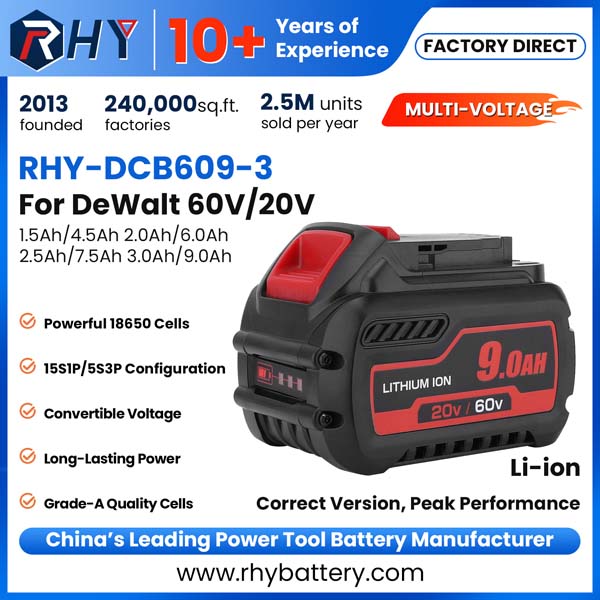Together for An Electric Future.
When comparing two popular lithium-ion rechargeable batteries, the 18650 and 21700, it's important to understand their key differences, advantages, and applications. These batteries are used across a range of devices, from electric cars and power tools to flashlights and e-cigarettes. This article will dive into the specifics of both battery types and provide insights into why one might be preferred over the other based on performance, cost, and overall user needs.
The 18650 battery is a well-established lithium-ion cell with a cylindrical shape. It is 18mm in diameter and 65mm in length. This battery has been widely used in applications like laptops, power tools, e-cigarettes, and electric vehicles. The 18650 battery typically has a capacity range from 2,600mAh to 3,600mAh. It provides reliable power, especially for low to medium-drain devices. Tesla, for instance, initially used these cells in their electric cars.
The 21700 battery, as the name suggests, has a diameter of 21mm and a length of 70mm. First introduced by Tesla and Panasonic in 2017, the 21700 is quickly becoming the go-to battery for high-performance devices. It is now commonly used in electric vehicles (like the Tesla Model 3), high-powered flashlights, and vaping devices. With a capacity range of 4,000mAh to 6,000mAh, the 21700 offers significantly more energy storage than the 18650, making it ideal for power-hungry applications.

One of the primary differences between the 18650 and 21700 batteries is their capacity. The 21700 battery offers a higher capacity, usually between 4,000mAh and 6,000mAh, compared to the 18650's 2,600mAh to 3,600mAh. This means that the 21700 lasts longer between charges, making it ideal for applications that require sustained power, like electric vehicles, power tools, and certain high-drain vaping mods.
In terms of energy density, the 21700 outperforms the 18650 with approximately 300Wh/kg compared to the 18650's 250Wh/kg. This means that the 21700 provides more power in the same or smaller space, making it more efficient and suitable for devices that need a higher power output without increasing the overall size or weight of the device.
While the 21700 offers more power, it is still relatively new compared to the 18650, which has been around for more than 30 years. As a result, 18650 batteries are more readily available and less expensive. Over 50 manufacturers produce 18650 cells, whereas the 21700 has fewer manufacturers, which can result in higher prices and limited supply in the market.
Another major difference between the two batteries is their size. The 21700 is physically larger, with a diameter of 21mm compared to the 18650's 18mm. This means that 21700 batteries will not fit into devices designed for 18650 batteries without modifications. For example, a flashlight or vape mod that uses an 18650 battery cannot typically accommodate a 21700 without significant alterations to the battery compartment.
The 21700's larger capacity translates into longer usage times between charges. This is particularly advantageous in devices like electric cars or power tools, where extended battery life is critical. For instance, in Tesla's Model 3, the switch from 18650 to 21700 batteries resulted in increased range and improved overall efficiency.
With a higher energy density, the 21700 can deliver more power with fewer cells, making it an efficient choice for high-drain applications. This is why electric vehicles and power tools benefit from 21700 cells, as they can supply more energy to the motor, improving performance.
While the 21700 may have a higher initial cost, its energy density and higher capacity make it more cost-effective in large systems. For example, an electric vehicle's battery pack using 21700 cells can be lighter and more compact, ultimately reducing the overall manufacturing cost compared to using 18650 cells.

Choosing between the 18650 and 21700 battery ultimately depends on your specific needs. If you need a long-lasting, high-performance battery for a power-intensive application, the 21700 is the clear winner. It offers better capacity, energy density, and power output than the 18650. However, for smaller, more portable devices where cost is a concern and power demands are less intense, the 18650 is still a highly viable option. Additionally, 18650 batteries are easier to find, making them a more affordable choice in many cases.
In conclusion, while the 18650 is still a dominant player in the battery market, the 21700 is rapidly gaining popularity, particularly in high-performance fields like electric vehicles and power tools. As more manufacturers adopt the 21700 standard, we can expect prices to drop and availability to increase, making this battery an increasingly attractive option for a wide range of devices.
For customized and high-performance battery solutions tailored to your specific needs, trust RHY—China’s leading lithium battery manufacturer. RHY is committed to delivering reliable, safe, and efficient energy solutions.Our expansive product range includes cutting-edge power tool batteries, garden tool batteries, vacuum cleaner batteries, electric bike batteries, portable power stations, battery chargers, and an array of other innovative solutions. At RHY Battery, we're dedicated to powering your devices with reliability, performance, and sustainability in mind.